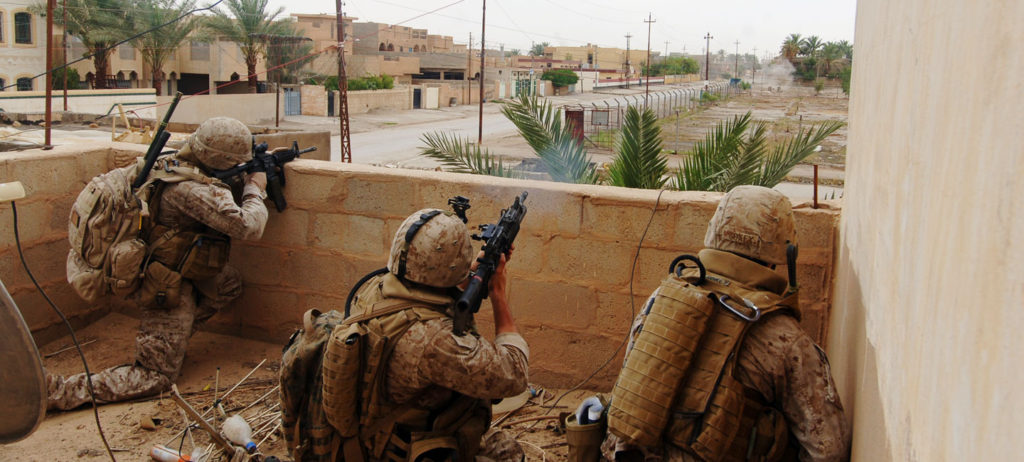When discussing firearms, the moment you go tactical in a conversation, the subject of cover usually comes up. Most often, it’s based around how important cover is to your survival, as without it you’ll perish.
Knowing is Half the Battle
In some cases, it’s true that you’ll perish without cover. However, let’s take a closer look at cover from an unplanned critical incident. The first thing we talk about is maintaining situational awareness; how to avoid being surprised.
We may find ourselves in a bad situation, but we at least want to know it’s bad, rather than be caught off guard completely. The problem with maintaining situational awareness is that you wake up everyday with a finite amount of energy and maintaining this type of awareness requires a huge amount of said energy. Yes, being surprised does happen; even monkeys fall out of trees.
Reduced Exposure
Before we get too far ahead of ourselves, let’s define cover. Cover is some sort of object or terrain capable of absorbing ballistic projectiles from a specific direction. Cover is very rarely omnidirectional, meaning it usually only works from a single direction.
Shift angularly and your cover could become your coffin. Once it’s been achieved, the real question is how you’re utilizing cover. Are you fighting from it or retreating behind it? If you’re fighting from cover, or plan to fight from behind it, you’ll have to expose a portion of your body to incoming rounds in order to effectively engage the target.
What reduces your risk, is your ability to “effectively” engage the threat and at the same time, minimize your exposure. If you’re firing rounds aimlessly, you may not get the outcome you were hoping for. However, if your rounds are hitting their mark, you’ll have significantly altered the outcome of the fight. The goal of cover should be to force your opponent to call off the fight, flee or seek cover themselves.
Convenience Not Requested
You don’t always get to pick your cover, it’ll be what’s close by or on hand. This means that you must be able to fight from a variety of positions, such as standing, kneeling, or prone, in order to capitalize on its effectiveness.
In addition, you may have to fight from over, around or in some cases, underneath cover. Working in a semi-permissive to non-permissive environment, it becomes easy to constantly scan for your enemy, your next piece of cover, your last piece of cover and your teammates. However, in a permissive environment like here domestically, it’s not always on your mind.
Once the bullets start flying, it better become part of your decision making process. Take a breath, look around and make a call.
What to Do Afterwards
You may find that due to the speed of the engagement, you don’t have time to seek cover initially. For instance, you may need to engage your opponent at point blank range. Afterwards, finding cover should be part of everyone’s post-shooting assessment.
In addition to scanning for additional threats and considering some ammunition management, I strongly encourage you to improve your position. Your goal post-shooting should be to improve your position or improve your weaponry. Seeking cover post-shooting may have its advantages and the real question to ask is, “Do I move to a position where I can still observe the known threat while managing the unknowns?”
That’s a tough question to answer in this format, coupled with the fact that we didn’t even touch on seeking an exit. That’s a topic for another day. If you were caught off guard initially, you may not be aware of existing cover. This shouldn’t stop you from practicing how to identify and exploit cover if and when the opportunity arises.
Editor-in-Chief’s Note: Jeff Gonzales was a decorated and respected US Navy SEAL, serving as an operator and trainer who participated in numerous combat operations throughout the world. He now uses his modern warfare expertise as President of Trident Concepts, LLC., a battle proven company specializing in weapons, tactics and techniques to meet the evolving threat. Bringing the same high-intensity mindset, operational success and lessons learned from NSW to their training programs, TRICON has been recognized as an industry leader by various federal, state and local units. Organizations interested in training with TRICON can call 928-925-7038 or visit tridentconcepts.com for more information.
